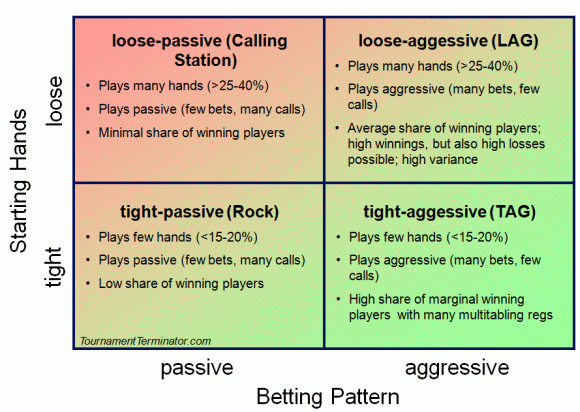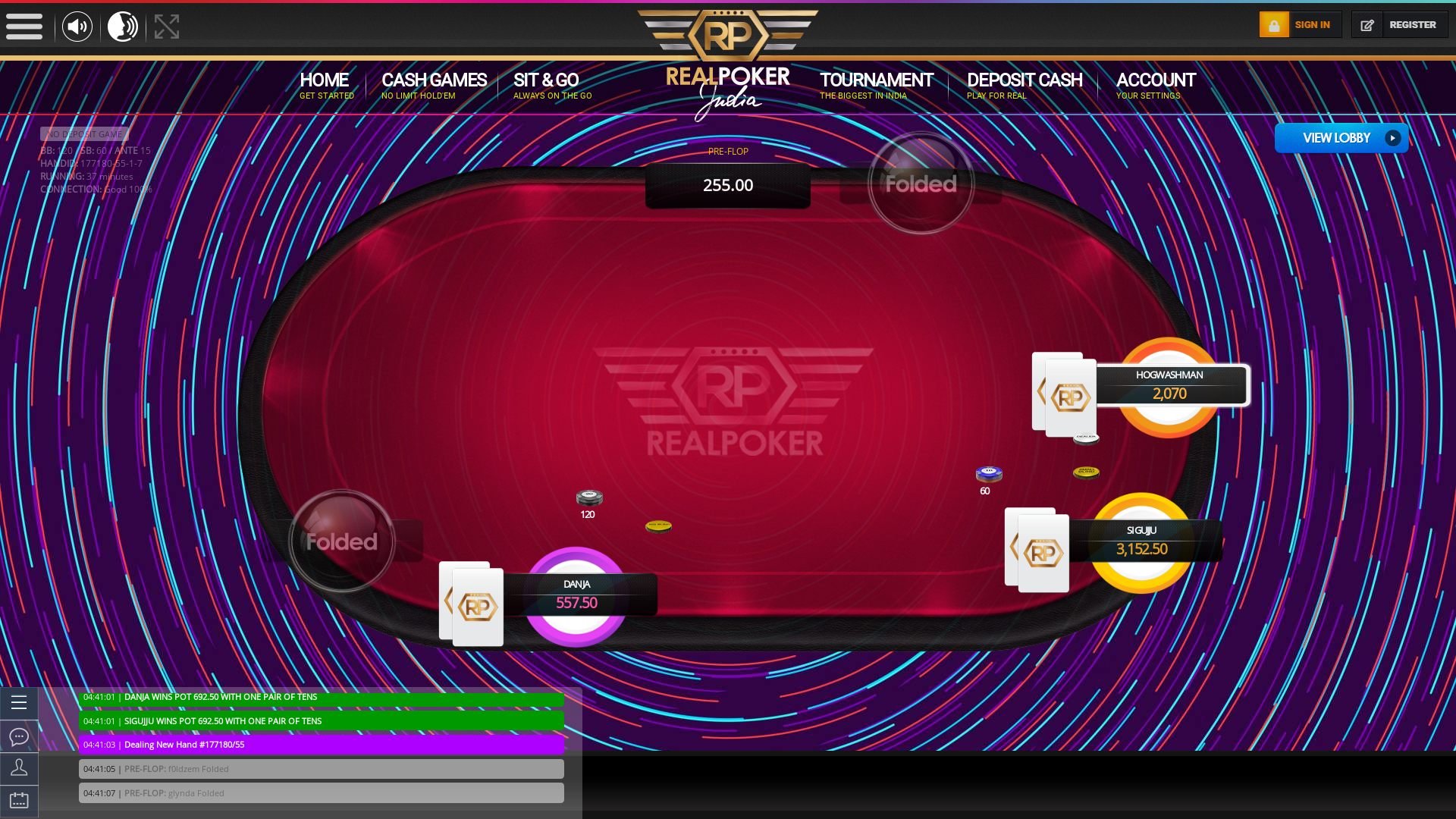Famous Loose Aggressive Poker Players
- Famous Loose Aggressive Poker Players Photos
- Famous Loose Aggressive Poker Players List
- Loose Aggressive Poker Strategy
- Famous Loose Aggressive Poker Players Names
In poker, 'loose aggressive' refers to a player who gets involved in many pots and plays his hands aggressively. An acronym for the loose aggressive player is 'LAG'. A skilled loose aggressive player can be very tough to play against, as you will have a very hard time putting them on hands. Due to their loose style of play, they will likely win.
The main tool being used by majority of online players is the HUD (Heads-Up Display) available through poker tracking software. This tool provides a whole range of statistics on your opponents which allows you to gain extra information when making decisions at the table. When HUD’s were first introduced into poker not many players were using them due to the unfamiliarity with the program. However, the top online players quickly adapted to them which gave them an even bigger edge at the tables.
The concept of a tight-aggressive poker strategy is simple: play very few hands, but play them aggressively. TAG poker worked like magic 10 years ago, when fishy players with loose pre-flop tendencies were a dime a dozen. Heck, even Mike McDermott recommended it to the professor in Rounders (1998). They are as follows: tight vs. Loose and passive vs. This first primary factor is shown in a player’s starting hand selection. Tight poker players usually play a small number of only the best hands. Loose poker players will often play a wide variety of hands. A loose poker player is one who puts money into the pot with almost anything. An aggressive poker player is one who takes the initiative by betting and raising on a regular basis. A player who has both characteristics at the same time is known as loose aggressive (LAG for short).

Statistics and math are a valuable tool in poker now despite not all players believing so. The great aspect of using a HUD is that it can be designed to whatever suits you as a player. Some players prefer basic stats to use a guideline whereas others prefer using as many statistics as possible to determine how their opponents are playing.
When using a HUD you need to make sure that you use the information given to you over a large sample as opposed to few hands: Making decisions based on players stats over a 20 hand sample might not give a true reflection of how they actually approach the game.
I would start to make decisions based on the HUD after an 80 hand sample or more as by then you’ll have a better indication of how someone is playing simply due to a more reliable sample of hands. Some of the following stats are typically used on a default HUD.
VPIP (Voluntary Put in Pot)
This statistic is used to show how many times a player voluntarily puts chips into pot e.g. limping, making a raise or calling a raise. However, it does not take into account the small and big blind position as they are both mandatory. VPIP is an important statistic and helps us identify if a player is tight, loose, solid or an extremely fishy player. The following categories show what number will relate to an opponent's playing style.
VPIP Numbers
0-10 - Tight player
11-20 - Tight players will have a VPIP of unto 13/14 but other statistics will determine how tight they are. Loose passive/aggressive players will also show a number in this range.
21-30 - Loose aggressive players will show a number around 21-25 but anything higher usually indicates a weaker fishy style of player. However, extremely aggressive/good players can show a VPIP in this range.
30+ - Weaker/fishy players
PFR (Pre-flop Raise)
This statistic is displayed in the HUD to show how many times an opponent has raised before the flop. This will indicate how aggressive/tight your opponents are which will help you identify a specific hand range which you can assign to certain players. The following number ranges will help you determine what style of player you are playing against.
PFR Numbers
0-10 - Tight player
11-20 -Tight players will tend to have a PFR capped at 12/13 but anything higher will be determined as just a regular aggressive player.
21-30 -Some aggressive/good players will be playing with a 21/22 stat but anything higher is a super aggressive player who are playing too many hands.
30+ -This range is usually assigned to fishy/weak players who are overplaying hands dealt to them.
3-bet
This statistic is used in the HUD to show us how many times our opponents re-raise another opponents raise pre-flop (the third bet). It's an extremely important statistic to use in the current era of poker and will help you understand how your opponents are playing and how you can exploit them depending on the % of hands they 3-bet. The following categories will determine how much your opponents are3-betting and what that necessarily means.
3-bet numbers
0-3 - This usually indicates a tighter player who will only 3-bet their value hands.
4-6 - This will indicate a fairly aggressive opponent who is still fairly tight but will be 3-betting some hands as a bluff.
7-9 - This statistic in the HUD will indicate a much more aggressive player who is 3-betting a vast amount of hands and will be trying to put pressure on opponents majority of the time.
10+ - With a 3-bet % of 10 or more, this will indicate an extremely aggressive player who is 3-betting way more than often showing that they are trying to run over the table or exploit the weaker opponents at the table.
Essentially, the more your opponents 3-bet the more you need to adjust to that player and figure out how to exploit them. This could be by only opening a strong range of hands with that player left to act or deciding to 4-bet bluff on a few occasions to play back at your opponents.
Fold to 3-bet
This statistic tells us how often a player will fold to a 3-bet pre-flop. Using this stat in our HUD is extremely important is it will give us enough information to determine how aggressive or tight we can play against particular players. If a player is opening a wide range of hands from a specific position and has a high fold to 3-bet then we can decide to 3-bet a wider range of hands. The following categories will determine how much your opponents are folding to 3-bets and how we react to that.
Fold to 3-bet Numbers
0-20 - This indicates that a player is not folding to 3-bets that often therefore we should only be 3-betting our value hands.
21-40 - This also indicates that a player will not fold to that many 3-bets but we can still pick our spots to 3-bet light especially if a players fold to 3-bet is close to 40.
41-60 - With a fold to 3-bet in this range, we can start to widen our 3-betting range against these players as enough of the time they will fold.
61-80 - Players that fall into this range will be relatively passive players therefore we can 3-bet them with marginal hands and play against these players in position a good amount of the time.
80+ - This indicates that majority of the time our opponents are folding to 3-bets therefore similar to the last category, we can be 3-betting more than usual against these players and exploiting them.
It's important to make sure that you adapt to different types of players but remember your own image at the table. Whilst it's fine to 3-bet a wide range of hands against players who have a high fold to 3-bet, you have to consider that our opponents will adapt to what we are doing at the table. Therefore, pick your spots and you don't always have to take a 3-bet spot, balance your play as much as you can.
Famous Loose Aggressive Poker Players Photos
ATS (Attempt to Steal)
This statistic tell us how often a player is raising from late position attempting to steal the blinds. Usually, a player will be attempting to steal from the HJ+ (Hijack) as there are less players left to act that will show resistance to the raise. Using this statistic in a HUD is extremely important in tournament poker as stealing blinds is a great way of accumulating chips. We will able to identify a more accurate range of hands that our opponents are opening with when attempting to steal based on the number shown in the HUD. Additionally, using the fold to 3-bet stat in conjunction with the attempt to steal stat, we will be able to identify how often they are stealing from late position but folding to 3-bets, which will give us a good indication of whether or not we can play back at our opponents . The following categories will show what certain statistics mean and how we can adapt to them.
ATS Numbers
0-20 - This indicates that our opponents are not attempting to steal that often therefore we can defend the blinds with a stronger range of hands and not play back at these opponents too much.
21-40 - This shows that our opponents are starting to steal a little wider therefore we can show some resistance by 3-betting or playing against them in position.
41-60 - With an attempt to steal stat in this range, this suggests that our opponents are raising a little wider in late position. Therefore, we can 3-bet a little wider in position against the right opponents and we can defend a little wider from the blinds if necessary.
61-80 - This indicates that our opponents are raising a wide amount from late position and we should be playing against them as much as we can in position to try and combat them. Typically, we will start to widen our 3-betting range and put more pressure on our opponents.
80+ - Similar to the last category, this suggests that our opponents are opening close to 100% of their range therefore we need to be playing back a good amount of the time or playing in position against them. These are the type of opponents we can attempt to trap and play our big hands in position to try and win the maximum.
As much as these categories help identify the types of players we are up against, if we play back against them too much they will start to adjust their opening range and try and induce a mistake out of us. It's important to balance your play rather than constantly 3-betting a player that is stealing 80% of the time. Thinking about our own image is just as important as our opponents image.
Without a shadow of a doubt, the most difficult player to combat at the cash game tables or in tournaments is one who plays a loose-aggressive poker strategy and plays it well.
A good loose-aggressive player, or LAG, at your table is a constant thorn in your side. Such players will frequently raise and three-bet preflop, fire more than their fair share of continuation bets, are not afraid to barrel on all three streets, and will pounce on any sign of weakness.
When no-limit hold’em was first becoming mainstream, there were very few people who knew how to play loose-aggressive poker, or at least were willing to do so. I vividly remember reading an older strategy book when I first discovered poker and seeing a section that said to proceed with extreme caution if you had been reraised, even if you held a hand as strong as pocket kings!
This may have been solid advice in the days of passive poker (played both loose and tight), but with so many players adopting a loose-aggressive poker strategy these days, you would be burning money by playing as advised by that particular book.
What is Loose-Aggressive Poker Strategy?

As its name suggests, a loose-aggressive poker strategy sees players loosen up their starting hand requirements (they play quite a lot of hands, often 30% or more that are dealt to them) and they play them aggressively (by coming out betting and raising).
However, not all LAGs are created equal. Bad LAGs are often reckless and will never find a fold, but LAG players who know the nuances of how to play loose-aggressive poker well almost always know where they stand in a hand and will fold to resistance. The former can be frustrating to play against, but the latter can decimate your stack and bankroll if you are not careful.
Loose-Aggressive Poker: Starting Hands
Some LAGs will play literally any two cards dealt to them and rely on their aggression or postflop skill to outmaneuver their opponents once the community cards come into play. If you are looking to start playing with a loose-aggressive poker strategy, it is advised to have some structure to your starting hand requirements.
We mentioned earlier than LAGs play a lot of hands, often 30% or more that they are dealt. Thirty-three percent of hands is a range that would include:
- 22-AA
- 54s+
- 75s++
- K8o+
- K4s+
- A2o+
- A2s+
As you can see, 33% represents a lot of hands, which is where some of the strength of a LAG style stems from — you have a difficult time knowing if such players are strong or weak preflop and whether they are betting with a pair, set, draw, or on a bluff after the flop.
How to Combat a Loose-Aggressive Poker Strategy
You have probably gathered by now that taking on those who know how to play loose-aggressive poker can lead to stressful situations at the tables, but that is not to mean that they are unbeatable. You just need to adapt your own style to combat theirs and use their LAG style against them.

First, when playing against LAG players give more consideration to your own starting hand requirements. Finding yourself out of position against LAG players is a nightmare, but even having position on them while holding a weak hand can be equally as difficult.
A hand such as may be a perfectly legitimate hand to open with from the button, but if there is a good loose-aggressive player in the big blind who has been three-betting you all session, it is probably best not to raise here as a steal because you are likely to be playing in a bloated pot with a weak hand against someone who is not going to let you see a cheap showdown.

Second, when up against a LAG consider slowplaying your strong hands both before and after the flop. Players who are starting to get out of line with how frequently they three-bet you are likely to fold to a four-bet because their reraising range is so wide. This gives you the perfect opportunity to simply call a three-bet with strong pairs such as aces, kings, or queens. While you should not make a habit of this, it is a good play to have in your arsenal when taking on someone playing a solid loose-aggressive poker strategy.
Furthermore, you can extend this slowplaying to postflop, too. LAGs will often make a continuation-bet and at least another bet on the turn (barreling), yet put the brakes on when they face strong resistance. Instead of check-raising or raising a hand as strong as a set, let your loose-aggressive opponents have a little more rope with which to hang themselves.
Also think about using an opponent’s loose-aggressive range of starting hands against them by bluffing them. A couple of paragraphs ago we advocated slowplaying big hands preflop, yet you can also four-bet bluff a habitual three-bettor — especially if you have a tighter image — because they will give you credit for a strong hand and they are more likely to be holding something less than stellar.
Likewise, the occasional check-raise bluff on later streets can work wonders if your loose-aggressive opponent has shown to be capable of giving up on a hand when facing aggression.

Famous Loose Aggressive Poker Players List
Conclusion
Like all moves in poker, do not overuse any of the tips mentioned above. If you do, you will become much easier to read, and someone will eventually call your bluff. Once players with a solid loose-aggressive poker strategy figure out what you are trying to do against them, they will target you and make your time at the tables most uncomfortable.
Meanwhile, learn how to play a LAG style yourself and you can be the one making things less comfortable for others at the tables.
Loose Aggressive Poker Strategy
Want to stay atop all the latest in the poker world? If so, make sure to get PokerNews updates on your social media outlets. Follow us on Twitter and find us on both Facebook and Google+!
Famous Loose Aggressive Poker Players Names
Tags
cash game strategytournament strategyno-limit hold’emloose-aggressive styleaggressionbluffingstarting hand selectionposition